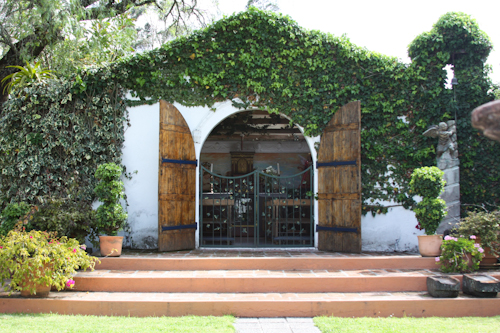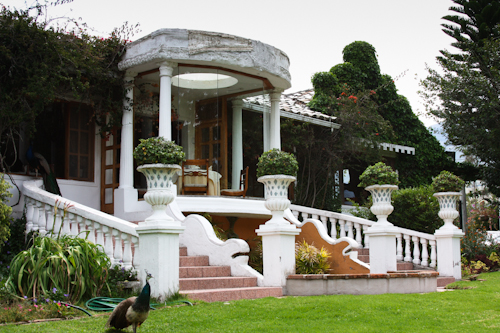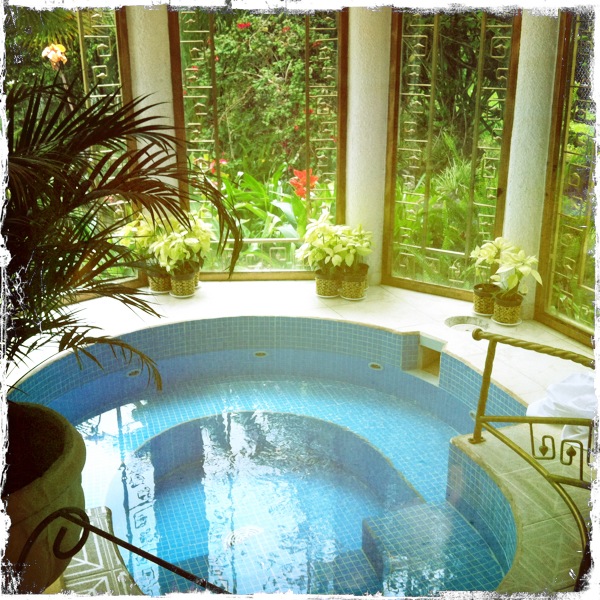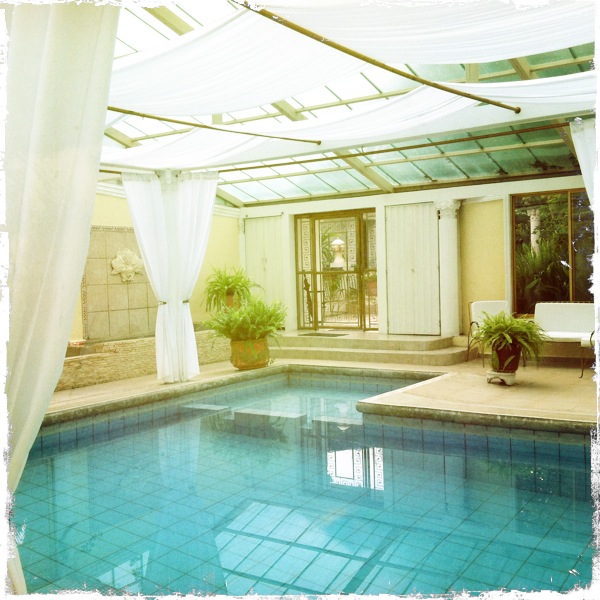“Hidden in a cluster of indigenous trees at the end of a dusty road sits La Mirage, a 5-star hotel and spa located in the tiny town of Cotacachi, Ecuador. Upon entering the massive iron gates, the atmosphere transforms from the lively banter of shopkeepers bartering over leather goods to an oasis of peace and tranquility.” – Sheri Escobar
Christina here, coming to you on Day 2 of our Travel Writing and Spanish Immersion Expedition in Cotacachi, Ecuador.
Today, we indulged in a variety of one-of-a kind spa treatments at La Mirage — a Relais and Chateaux hotel and spa in the middle of the Ecuadorian countryside. See photos here:
The spa menu ranges from relaxing to revitalizing and features treatments with lavender, honey and milk, eucalyptus, and even chocolate… plus, purification treatments with algae and native anti-aging plants.
Visiting La Mirage really DOES feel like you’re walking straight into a mirage of opulence and luxury at the end of a forgotten dirt-road in a town with an unfamiliar name.
And, attendee Sheri Escobar captured that feeling in her “lede,” above.
As our instructor, Kyle Wagner, told us in class this morning, the lede is the first sentence or two of your article. You don’t have a lot of time to grab a reader’s attention… so a strong lede is vital to hook them right off the bat.
So, how exactly do you create a strong lede?
Try one of these three lede types that Kyle recommends:
1. ONE WORD
When done effectively, a good one-word lede is a great way to hook your reader and get your article started.
2. HE SAID, SHE SAID
Start your story with an intriguing quote. A good quote can throw the reader right into the action of your story, and it will make your story easier to write.
3. KEEP US IN SUSPENSE
Give your reader the sense that there’s something more to come that you can only find out by reading further.
Remember, your ultimate goal is to get your reader to keep reading.
If you find you’re stuck on the first sentence, sit down and think about what you’re excited about. What about your experience makes you want to call and tell your friends about it? It can also help to talk about your ideas out loud or discuss them with someone else.
To make your lede even stronger, keep these tips in mind:
** Use dynamic, aggressive, active language
** Don’t start with “I”
** Don’t use clichés. If you’ve heard it before, cut it. Especially in your lede.
** Cut passive language. Especially the verbs “is” and “are.”
Sheri did a great job of all of these, above.
Tomorrow, we’re headed to the weaving village of Peguche to learn how the locals dye alpaca wool brilliant red, orange, purple, green, and yellow using leaves and bugs. Then, we’ll watch as they weave it into gorgeous sweaters, rugs, scarves, and more.
Shouldn’t be hard to find a few good travel stories there!
Hasta mañana
[Editor’s Note: Learn more about opportunities to profit from your travels (and even from your own home) in our free online newsletter The Right Way to Travel.]
Travel Writing Resources
How To Become A Travel Writer – The Easy Way
Easy Steps To Landing Your First Byline As A Travel Writer
Marketing For Travel Writers: 5 Ways To Get Started
22 Travel Story Ideas To Get You Published





